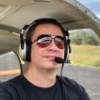safe CO levels
-
Members Online
- Igor_U
- Skates97
- Raistlin
- Schllc
- 201Steve
- Ascend MX
- N201MKTurbo
- Rmnpilot
- gevertex
- KSMooniac
- Jeff Uphoff
- ZamF16
- IvanP
- donkaye, MCFI
- exM20K
- Scott Dennstaedt, PhD
- hammdo
- 1980Mooney
- Rwsavory
- Flyler
- M20F
- mluvara
- redbaron1982
- Jeph357
- Griswold
- ProtoFly
- TCC
- hazek
- Stealth Mooney
- Denis Mexted
- MikeOH
- Brandt
- Nick81


Recommended Posts
Join the conversation
You can post now and register later. If you have an account, sign in now to post with your account.